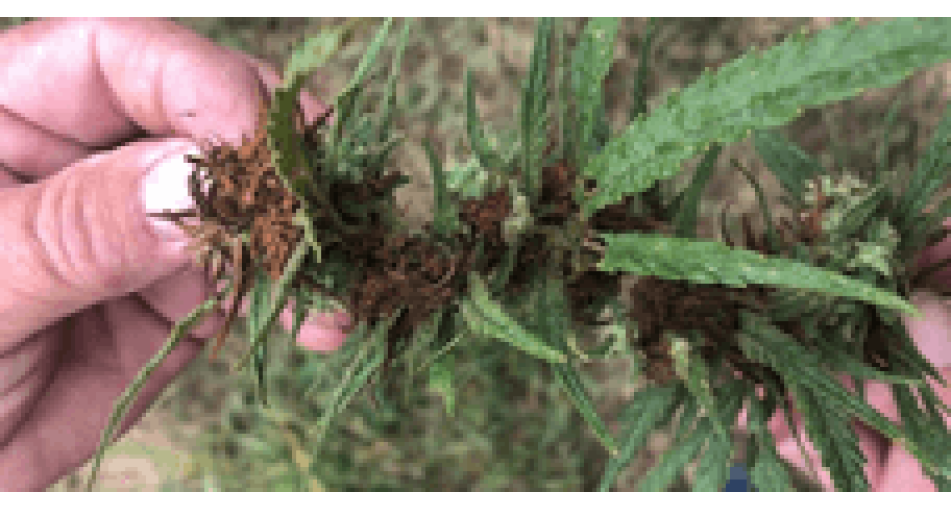
Cannabis diseases in the open field, one way or another, are associated with adverse environmental conditions. Indoors, it is easy to control the state of the soil, temperature, humidity, but this will not work out on the street - nature has its own routine. Cannabis diseases, which we will discuss below, can also be caused by illiterate care. Therefore, the article will not only tell you about the main threats to growing plants and how to deal with them, but also protect you from mistakes in growing.
gray mold
It affects the entire plant, except for the root system. Loves humidity, so it appears in the rainy season and with excessive watering. Low air temperature increases the risk of developing the disease. On wet areas of the plant that do not have time to dry out, a gray coating appears, which turns black over time. The stem softens, the process of decay begins in the leaves and inflorescences.
You can fight gray mold in the initial stages. When the plaque has just formed, the plant must be sprayed with Bordeaux liquid. In the later stages, when the mold has darkened, the stem is affected and severe decay is observed, the plant can no longer be saved. In this case, it is recommended to immediately remove it from the plantation so as not to infect other bushes.
white mold
Another disease associated with high humidity. In the early stages, white mold appears near the root system, then the leaves turn yellow and wither, and the plant begins to rot. At the first sign of disease, the frequency of watering should be reduced. In the treatment of plants, use a copper-soap solution or special fungicidal preparations. In the later stages, when the disease has affected the entire plant, the bush is removed.
powdery mildew
The plant is covered with a white coating with black patches. From the outside it seems that it is sprinkled with flour or powdered sugar - hence the name. The cause of the disease is in a low temperature - up to fifteen degrees - with a humidity above eighty percent. Powdery mildew appears during a sharp cold snap during prolonged or short, but heavy downpours. If you do not treat the plant, then the leaves will begin to fall off very soon. The problem is solved by replacing the topsoil, reducing the frequency of watering and fungicidal preparations.
Prevention of diseases in the open field
Use store-bought potting mixes or plant seedlings where the plants show no signs of disease.
Reduce watering when humidity rises.
By loosening the top soil, moisture accumulation can be avoided.
Use top dressing, phosphorus and potassium will be especially useful.
Remove diseased shoots and other infected parts of the plant.
The three most common outdoor cannabis diseases
